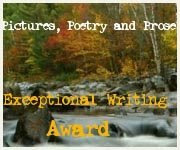
Some interesting research, that's still ongoing, about what women prefer to see in advertising.
It would appear that female audiences do prefer to see models who reflect them in size, age, and background.
The research is being carried out at the University of Cambridge.
Dove, the skin care company, has been the most prominent brand in the UK to acknowledge this fact, well before the research began, running a successful advertising campaign using everyday people to front its campaigns. The image above is taken from one of their advertising series.
You can read the Guardian article all about it here.
What's interesting too is to browse through the comments that follow. Opinion is, naturally enough, divided. There are some who think promoting 'over-sized' models is promoting poor lifestyle choices, while others, both male and female, see the use of a wider range of bodyshapes to be a good move. One or two hold a cynical feminist stance, arguing that to encourage women to feel as if they are taking on an editorial role in marketing, is a cunning ploy to suck audience members into a greater dependency on brand allegiance.
The re-presentation of the human form in the media is a complex topic and one that too easily becomes bogged down in polemical mud-slinging. However, it's the high octane level of debate it causes, and the important issues it raises, that makes it such a rich area for study.





.jpg)






